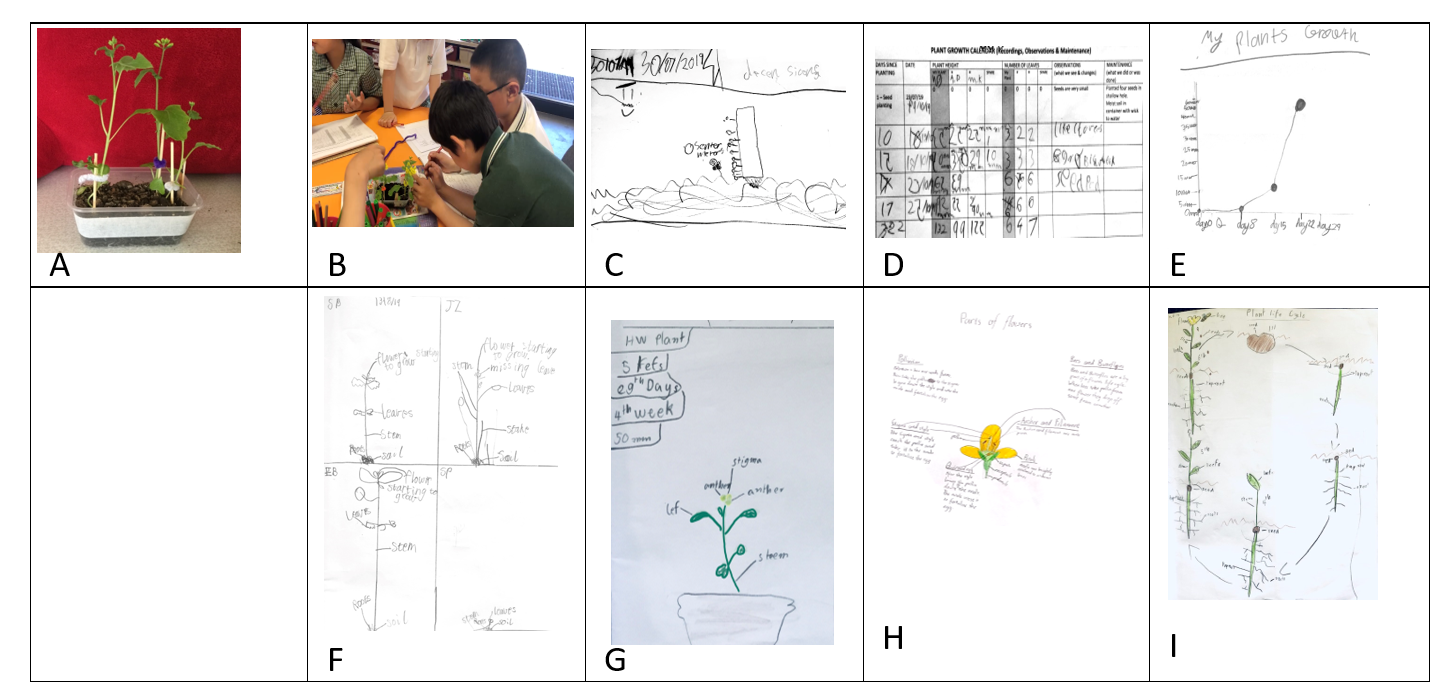A look at any science textbook will make it obvious that learning science involves understanding how to interpret and use multimodal representations of phenomena: diagrams, 3D models, photographs, tables and graphs, and chemical or mathematical equations. Each mode (visual, verbal or written, tactile, mathematical) has particular strengths in how it productively constrains our attention and shapes our thinking:
- Visual diagrams or photographs are powerful in explicating shape and spatial relations or visualising sequences of events.
- Text is effective for expressing logical arguments such as causal explanation.
- Tables help organise and focus our attention on patterns in events or numbers.
- Graphs constrain our attention to trends and relations.
It is through the creation and use of these multimodal representational languages that scientists build knowledge, and that students learn to discern and use that knowledge and the practices that go with it. For example, understanding a concept like ‘plant structure and function’ involves being able to decipher the key parts of diverse plants (through diagrams, annotations, classification charts) and their purposes (through textual explanation, narrative descriptions and charts, and diagrams, tables and graphs).
Sequencing, interpreting, and coordinating representations
If learning in science can be viewed as induction into these multimodal language practices then science topics need to be planned to strategically sequence and coordinate these. The figure below shows a series of representational tasks for a study of the growth of ‘fast plants’ where students measured these regularly using pipe cleaners placed alongside the plant, recording through diagrams and a table, the growth in height and in leaf number, then a graph of plant growth for different groups, and a series of diagrams of flowers, the pollination process (students themselves pollinated using buds as ‘bee sticks’), and then the plant reproductive cycle.

This sequence illustrates:
- the progression from observation through to more abstracted and general scientific and mathematical representations.
- how representational work in science can be productively embedded in observation and measurement activity.
In teaching such sequences it is important to unpack for students the ‘grammar’ of each representational form – how best to annotate diagrams, how to represent scale, the conventions around constructing graphs, or of biological drawings. Too often we assume that students can interpret these representational conventions, but they need to be explicitly unpacked. Further, having students actively create representations is a way of monitoring the challenges they have.
We need to support students to recognise how these representations interrelate to achieve a rich understanding of the target concepts. To understand the meaning of the growth graph, students need to understand its link to the table, and back to the measurement process by which the height was represented. Interpreting the graph slope as showing that the height increased more quickly after the second week, is reflected in the table numbers and made meaningful by linking with students’ material experiences.
Constructing, evaluating and revising representations
If we value representational work as a scientific practice through which understandings are established and expressed, then guiding students to construct representations in response to a challenge, then evaluate and refine them in a consensus-building process, is a powerful way of supporting learning. Such a process underpins the structure of the Inquire phase of the LIA Framework.
The Question routine involves not only engaging students’ interest but also preparing them with the skills to respond productively to a representational challenge.
During the Investigate routine the teacher is constantly interacting with students to question, suggest and challenge students in their representing work. Actively representing to ‘make thinking visible’ supports learning in three distinct ways:
- Supporting individual reasoning: It challenges students to articulate and refine their ideas,
- Collaborative reasoning: Students constructing representations in groups makes thinking visible for discussion and clarification with peers,
- Teacher monitoring: Teachers can more effectively monitor students’ thinking and support them to refine their ideas.
In the Integrate routine involving the building of consensus, two strategies are commonly used:
- Selective display: Strategically inviting particular students to display and explain their representational work, inviting class comment on the strengths of each, and where they might be clarified.
- Gallery walk: Students leave their representations on their desks and are invited to walk around to view other students’ work, looking for representational aspects that were particularly clear or opened up fresh ideas.
Re-representing in a different mode is a powerful learning strategy and can be undertaken outside of hands-on investigations. For instance, students can be challenged to compare and critique different representations in books (e.g. of the water cycle) and come up with their own version, or they can be challenged to create a stop-motion video, or a cartoon sequence, of a scientific process in a book such as particle models of evaporation.
Discuss with your colleagues
Consider the sequence of representations in the fast plant experiment (Figure 1).
- Identify the key features of each representation.
- Contrast (the differences) the key features and the way each approach develops students’ ability to measure and record plant growth.
- Identify strategies/questions that could be used to support students in making a meaningful link between measurements shown in pictures, tables, and graphs.
Develop a sequence of representational challenges appropriate for the next teaching sequence for your students. An example you could use includes:
- Experience and represent different degrees of ‘hotness’ of objects,
- Use thermometers to explore a range of temperatures,
- Compare the rate of cooling of warm water in different cups.
References
Tytler, R., & Prain, V. (2022). Interdisciplinary Mathematics and Science – a guided inquiry approach to enhance student learning. Teaching Science, 68(1), 31-43.
Carolan, J., Prain, V., & Waldrip, B. (2008). Using representations for teaching and learning in science. Teaching Science, 54(1), 18-23.
Tytler, R., Haslam, F., Prain, V., & Hubber, P. (2009). An explicit representational focus for teaching and learning about animals in the environment. Teaching Science, 55(4), 21-27
